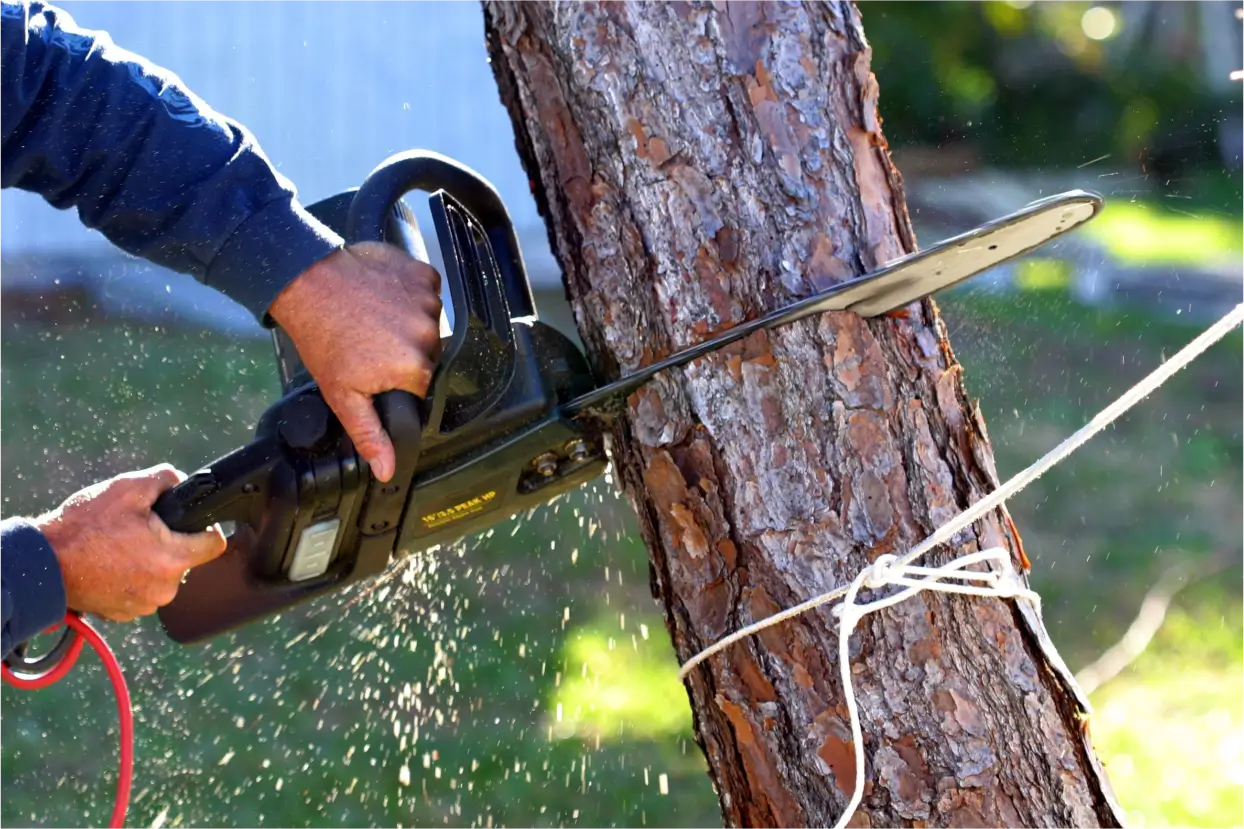Severe storms can wreak havoc on your property, especially when trees are involved. The aftermath often leaves homeowners facing the daunting task of emergency tree removal. Whether it’s a partially fallen tree or one that’s dangerously leaning, knowing the correct steps to take is crucial for ensuring the safety of your home and loved ones.
Initial Assessment: Evaluating the Damage
The first step in emergency tree removal is assessing the extent of the damage. After a storm, it’s essential to inspect the trees on your property carefully. Look for signs of immediate danger, such as large branches that are hanging precariously or trees that are leaning at an abnormal angle. Fallen power lines tangled with trees or branches should be avoided entirely, and emergency services should be contacted immediately.
During the assessment, note the size of the tree, its position relative to structures on your property, and the type of damage it has sustained. A comprehensive assessment will help determine the urgency of removal and the best approach for handling the situation.
Safety Protocols: Prioritizing Safety During Removal
Safety should be the top priority during emergency tree removal. Large trees or branches can pose significant risks if not handled properly. Never attempt to remove a tree that’s close to power lines or structures without professional assistance.
If the tree is on the ground and doesn’t pose an immediate threat, ensure that the area is cordoned off to prevent injuries. For trees that are still standing but unstable, it’s essential to keep a safe distance until professionals arrive.
Personal protective equipment (PPE) such as hard hats, gloves, and sturdy footwear should be worn if you are involved in any part of the removal process. However, the complexity and danger associated with emergency tree removal often require the expertise of trained professionals.
Professional Expertise: Why You Need a Certified Arborist
Hiring a certified arborist for emergency tree removal ensures that the job is done safely and effectively. Arborists have the training and experience necessary to handle complex tree removals, especially in emergency situations where precision is crucial.
A certified arborist will:
- Conduct a thorough risk assessment to determine the safest removal method.
- Use specialized equipment to manage the removal without causing further damage to your property.
- Follow strict safety protocols to protect both the workers and your property.
- Provide insights on whether the tree can be saved or if complete removal is necessary.
Their expertise not only guarantees the safe removal of the tree but also prevents potential future hazards that may arise from improper removal.
The Removal Process: Step-by-Step Overview
The actual tree removal process is methodical and requires careful planning. Here’s an overview of the typical steps involved:
- Preparation: Before any cutting begins, the area around the tree is cleared of debris, vehicles, and other obstructions. This ensures that there is ample space for the removal equipment and that any falling branches won’t cause additional damage.
- Cutting and Lowering Branches: The arborist will typically start by removing large branches. These are cut in sections and carefully lowered to the ground to minimize the risk of damage to nearby structures.
- Felling the Tree: Once the branches are removed, the main trunk is cut down. Depending on the size and position of the tree, it may be felled in one piece or in sections. The direction of the fall is carefully planned to avoid any damage to the property.
- Wood Disposal: After the tree is down, the wood is either cut into manageable pieces for removal or chipped on-site. Some homeowners may choose to keep the wood for firewood, but this should be discussed with the arborist beforehand.
Stump Removal: Finishing the Job Completely
Once the tree is removed, the remaining stump can be an eyesore and a tripping hazard. Stump removal is the final step in the emergency tree removal process. There are several methods for stump removal, including grinding and complete excavation.
Stump grinding is the most common method, where a specialized machine grinds the stump down to below ground level. This allows for the area to be re-landscaped or re-planted. Complete excavation involves digging out the entire stump and root system, which is more labour-intensive but necessary for certain situations.
Preventive Measures: Protecting Your Property from Future Storm Damage
While emergency tree removal addresses the immediate issue, preventive measures can help protect your property from future storm damage. Regular tree maintenance, including pruning and health assessments by a certified arborist, can prevent weak branches from becoming hazards.
Additionally, removing dead or diseased trees before they become a threat can save you from costly and dangerous emergency removals. Consider planting wind-resistant tree species that are less likely to break or fall during a storm.
Trust TheLandscapr for Safe and Professional Tree Removal
Dealing with the aftermath of a storm can be overwhelming, especially when trees on your property are involved. For residents in Durham Region, TheLandscapr offers expert emergency tree removal services. Our certified arborists are equipped to handle even the most challenging situations, ensuring the safety and security of your home. Trust us to restore your property and provide peace of mind during a stressful time.

